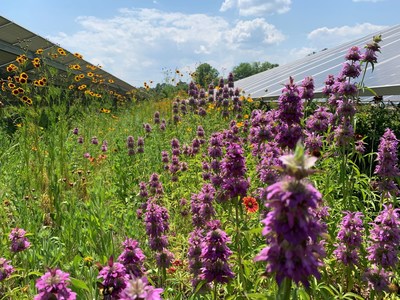
In honor of the fourth week of Environmental Awareness Month this September, Georgia Power is highlighting its efforts around protecting and managing habitats throughout the state, such as the company’s right-of-way management, including special management areas for rare plants like the Georgia aster and the smooth purple coneflower.
At Georgia Power our projects work towards conservation, restoration and awareness, so that future generations will have a prosperous, healthy and beautiful place to call home. There are four major conservation areas the company is highlighting as a part of Environmental Awareness Month: Land, Sensitive Species, Waterways and Habitats.
Last week, the company featured its efforts around improving and protecting Georgia’s waterways and the species that live in them, such as shoal bass. The second week, Georgia Power highlighted conservation of sensitive species, including the gopher tortoise, Georgia’s state reptile. As one of the oldest living species native to Georgia and a keystone species of longleaf pine forests, it supports hundreds of other species. Georgia Power kicked off the month featuring its land management practices, including maintaining and operating over 100,000 acres of land, 60,000 acres of water and more than 15 lake properties as the largest non-governmental provider of public recreation in Georgia.
Week 4: We Protect and Manage Habitats
Transmission Rights-of-Way Management – With approximately 12,000 miles of high-voltage transmission lines under our control, Georgia Power utility arborists maintain permanently open corridors across the state to ensure system reliability. Transmission rights-of-way can provide some of the only meadow habitat available for shade-intolerant plant species. These plants can be critical for pollinator species such as butterflies or bees. Some segments along the company’s rights-of-way are managed specifically to conserve plants of special interest by altering mowing or spraying schedules.
- Georgia Aster – The Georgia aster is a flowering plant that thrives in the open habitat of transmission rights-of-way. In 2014, Georgia Power was one of nine signatories to a Candidate Conservation Agreement (CCA) to conduct research, surveys, and management for Georgia aster. Since this agreement, the company has located numerous new populations on our rights-of-way in northern and middle Georgia.
Special Management Areas – Georgia Power lands and rights-of-way sites provide habitat for rare plants and are often designated as Special Management Areas. Even though standard management practices are usually sufficient for maintaining these populations, we protect these sites or alter management practices to enhance the viability of these populations. In some cases, rare plants have been restored to suitable sites.
- Smooth Purple Coneflower – The Smooth Coneflower is an endangered plant now only found in two counties in Georgia (Stephens and Habersham) It is a prairie plant and has a smooth stem and drooping pink petals. Typical habitat for the coneflower is open woods, cedar barrens, roadsides, clear-cuts, dry limestone bluffs, and power line rights-of-way, usually on magnesium- and calcium-rich soils.
Pollinator Research Project – In partnership with the Electric Power Research Institute (EPRI), Georgia Power has sponsored a pollinator habitat research effort to advance the understanding, use and management of specific groundcover solutions around and beneath installed solar arrays. These solutions have the potential to foster soil quality improvements, improving benefits to wildlife and pollinators and lowering integrated solar-facility maintenance costs (see photo).
SOURCE Georgia Power


Chattooga Local News
Carr Convicts 16 in Barrow County, Shuts Down Prison Gang Operation

Bulloch Public Safety
12/04/2025 Booking Report for Bulloch County

Bulloch Public Safety
12/02/2025 Booking Report for Bulloch County

Bulloch Public Safety
11/10/2025 Booking Report for Bulloch County

Bulloch Public Safety
11/24/2025 Booking Report for Bulloch County

Bulloch Public Safety
11/06/2025 Booking Report for Bulloch County

Bulloch Public Safety
12/01/2025 Booking Report for Bulloch County

Bulloch Public Safety
11/12/2025 Booking Report for Bulloch County






